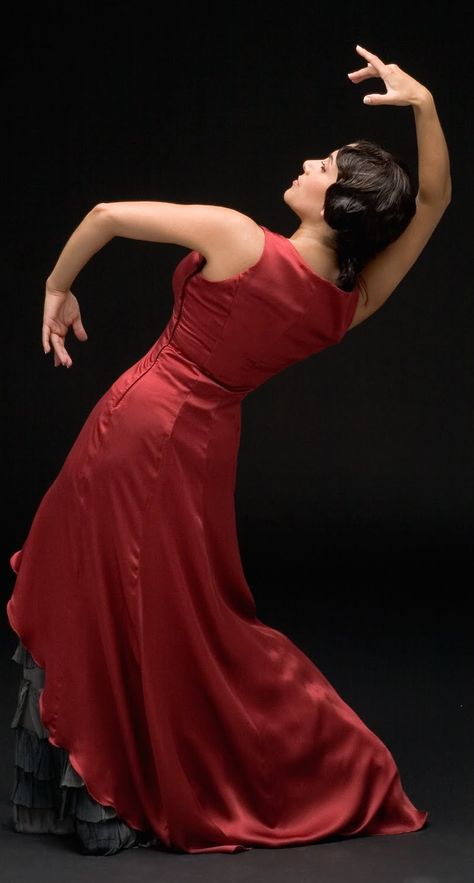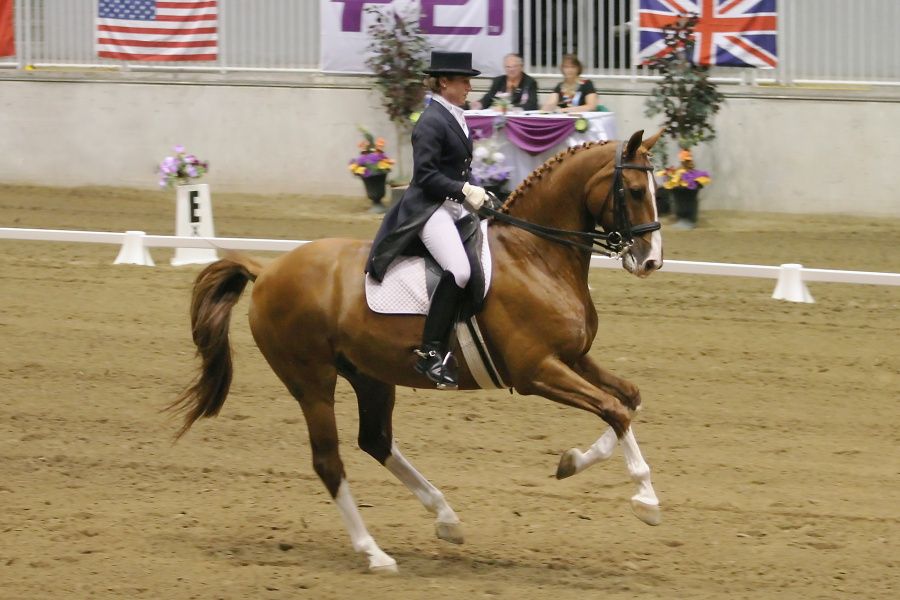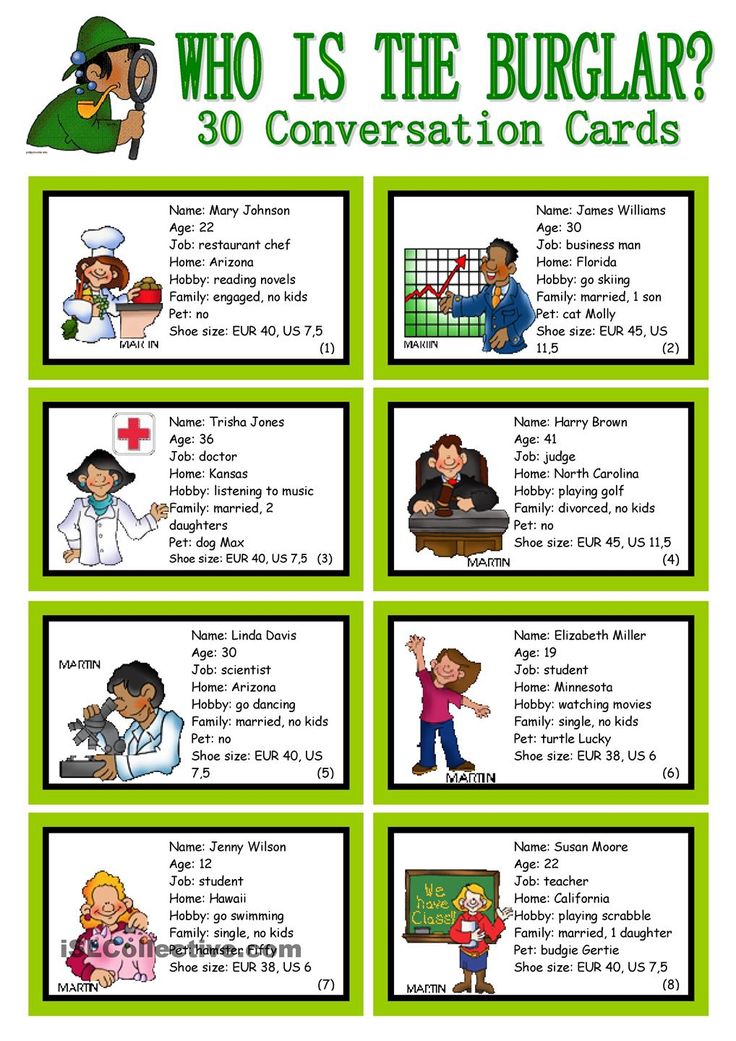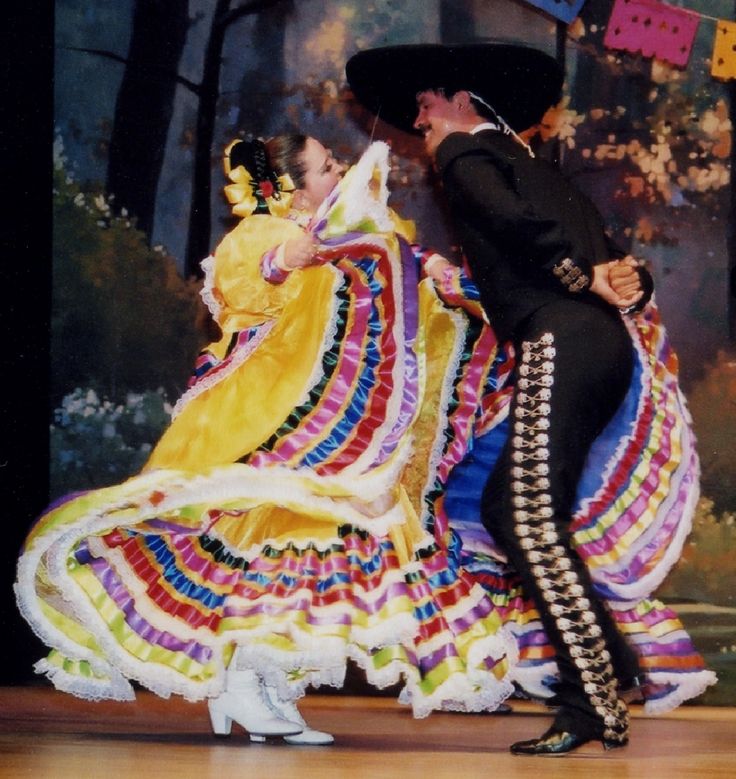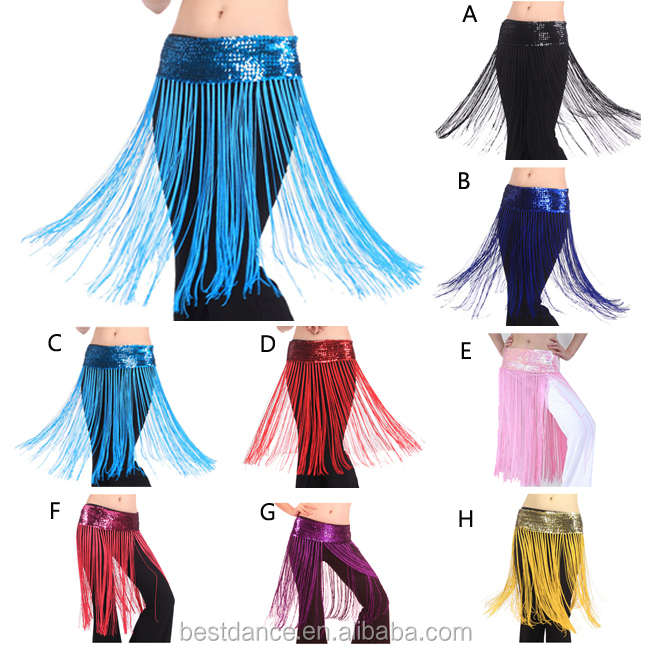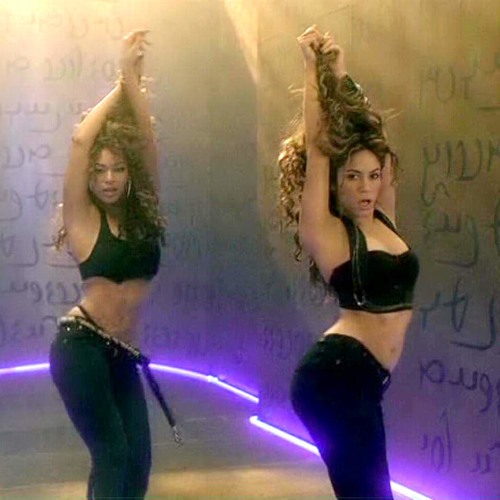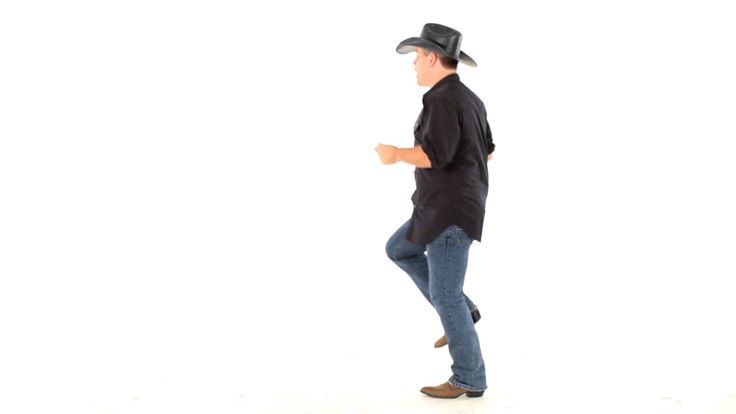How to flamenco dance for beginners
The Beginner's Guide to Flamenco
Flamenco is such a captivating art form and it enthralls and entices novices to begin a journey of learning it. So, they sign up for a class and then……
FREAK OUT! Why? Who knew flamenco was so complicated! There are the steps, then the footwork and the hand coordination and then that weird 12 count rhythm and all the different rhythms and, and, and….
It can be overwhelming for sure. Realize that flamenco isn’t like learning how to ride a bike. If you think of learning how to dance flamenco more like learning a new language, then it’s easier to digest the whole concept and just enjoy the journey.
But fear not, here is YOUR general guide to flamenco for beginners.
A SUPER BRIEF HISTORY OF FLAMENCO
Flamenco stems from hundreds of years of Andalusian (southern region of Spain) history that interplays with Andalusian, Moorish, Jewish and Gitano (Roma) cultures before and after the Reconquest of Spain (1492). But it is from the Gitanos’ anguished history that much of flamenco’s earliest most profound rhythms come from. In the beginning, the cante (singing) was the center of flamenco and stayed within family settings. By the late 18th century it began to venture into a performance environment and grew to the Golden Age of Flamenco in the late 19th century where the “cafe cantantes” flourished. This is where the dancer became the major attraction of the performances. Flamenco entered the theater in the late 19th and early 20th century where it was criticized for falling victim to commercialism.
FORMS OF FLAMENCO
At its core, flamenco consists of toque (guitar), cante (singing), and baile (dance). The music of flamenco is based on different palos (rhythms). Think of your favorite song and think of others doing covers of it or sampling it in variations. You could hear the chords of that song and immediately recognize it as your favorite song- quick, name that tune! That’s the same with flamenco. There are many rhythms like Alegrias, Guajiras, Tangos, Solea, Fandangos, Seguirilla, etc. They are all identifiable by their own tempo, feeling, melody and chords. Some are danced while others are only sung.
There are many rhythms like Alegrias, Guajiras, Tangos, Solea, Fandangos, Seguirilla, etc. They are all identifiable by their own tempo, feeling, melody and chords. Some are danced while others are only sung.
FLAMENCO TODAY
Although Flamenco is highly associated with Spain, it is still an Andalusian art form where it is still taught in homes through an oral tradition and occurs at informal gatherings called juergas. It is also taught formally in dance academies throughout Spain and has become a world wide phenomenon such that it has been declared a World Heritage Treasure by UNESCO in 2010. Flamenco aficionados from all over the world practice flamenco and flock to Spain every year for workshops and studies.
Generally, you’ll see flamenco in three forms- casera, tablao, teatro. Casera (home-style) means the kind of flamenco you’ll find at homes danced by non professionals at parties or juergas. This is where you’ll see grandma get up to do a little pata’a por bulerias at a wedding.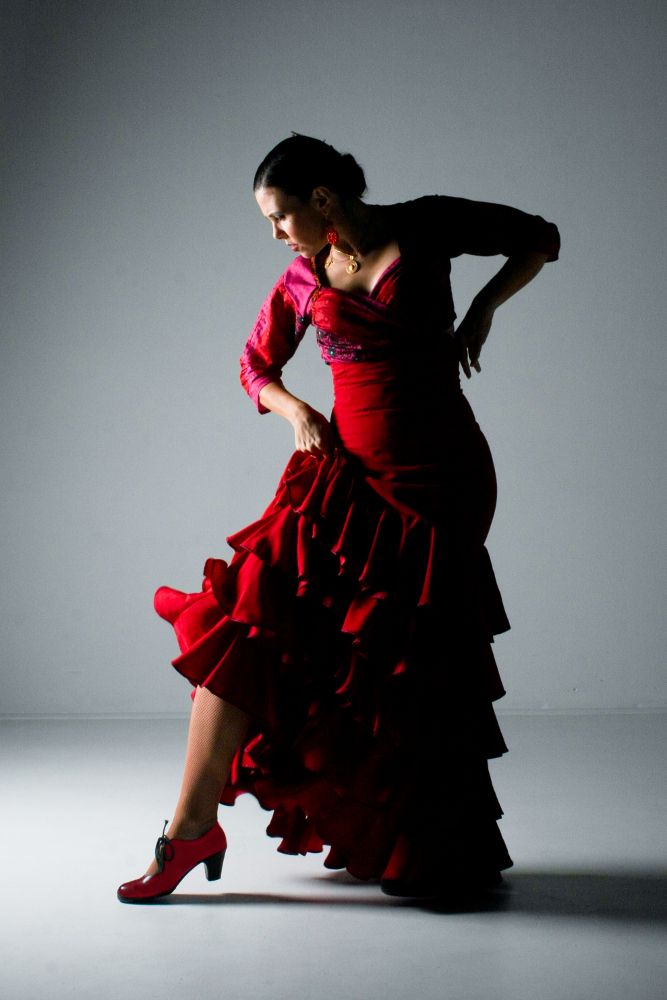 Then there’s tablao flamenco which is the type performed at the flamenco restaurants or clubs. These are small venues and tend to be improvised, although there may be some rehearsal for ongoing shows. Finally, teatro (theater) are the big flamenco productions that you see touring with company dancers, a choreographer and many musicians. Much thought is put into costuming, lighting, story and choreography.
Then there’s tablao flamenco which is the type performed at the flamenco restaurants or clubs. These are small venues and tend to be improvised, although there may be some rehearsal for ongoing shows. Finally, teatro (theater) are the big flamenco productions that you see touring with company dancers, a choreographer and many musicians. Much thought is put into costuming, lighting, story and choreography.
From there you could say there are two types of dance styles seen in tablao and theater and it’s from how the dancer learned to dance. Gitano style tends to be taught within a Gitano family home and is more raw and unrefined. Then the “rest” of flamenco styling tends to be quite broad but the general idea is that it’s learned in the dance studios and dancers may also train in other styles such as ballet. One isn’t better than the other, they just have different stylings.
COMPONENTS OF FLAMENCO FOR DANCERS
New beginners will most likely learn Tangos first, which is a fun and light hearted 4-count rhythm, then move on to one of the 12 count rhythms after several weeks.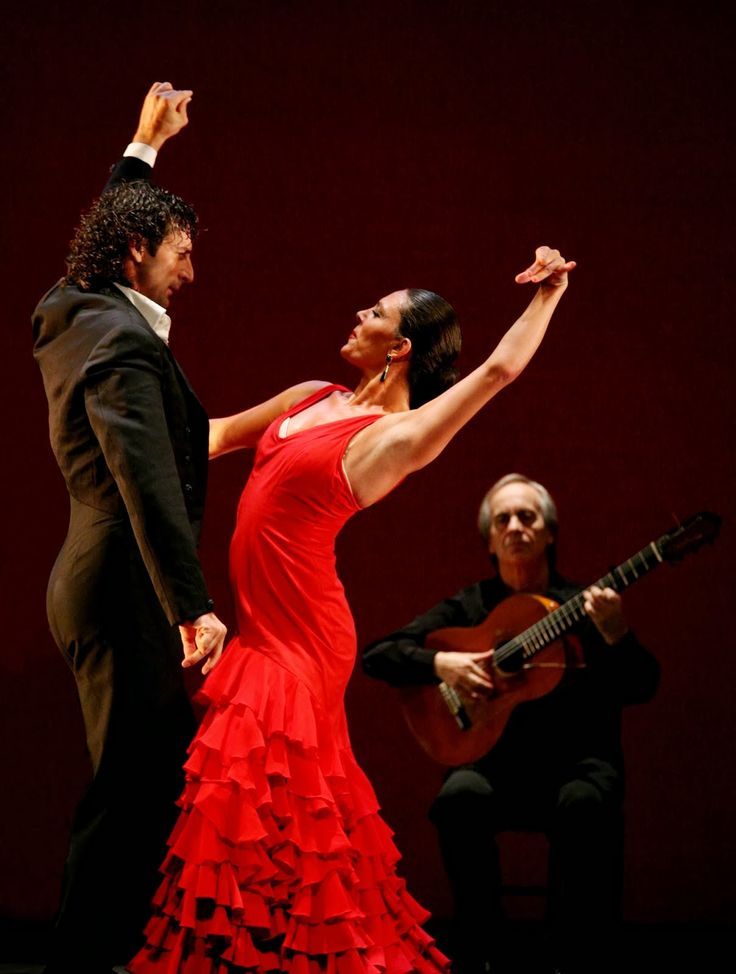 But what do they actually learn?
But what do they actually learn?
We start off with palmas, which is the hand clapping that goes along with keeping the rhythm. It’s important to be able to “hear” the rhythm and to keep time with the palmas. Then we move on to learning the hand movements that when done correctly look like beautiful fluttering birds. Then there’s marcaje which are the marking steps followed by pies (pronounced pee-yes, not the desserts) which is any of the rhythmical footwork that can be used as an accent or for a whole footwork sequence (escobilla).
Dancers learn all the various technique but we’re always learning the cante and the compás. We can’t dance without it.
In a live flamenco show, the dancer is in tune with the singer and the guitarist. They’re all playing off of each other just like a good jazz band when they’re improvising. If the dancer brings up the tempo, the musicians follow. If the guitarist plays a falseta, the dancer dances without footwork to let the guitarist shine. When the singer is singing, the dancer dances according the mood. It’s a conversation between all three elements.
When the singer is singing, the dancer dances according the mood. It’s a conversation between all three elements.
COMPAS
The most important element is the compás, which is the rhythm. In the United States, we teachers generally teach flamenco in Spanglish, speaking English while sprinkling flamenco terms in Spanish. For example I’ll say, “You’re dancing out of compás,” which means “You’re dancing out of rhythm. I will also say, “We’ll do this step for 4 compases and then transition.” In this case, compás means a measure- a count of 4 or a count of 12, depending on which palo (rhythm) we are dancing.
Now, compás is the one thing that can truly trip up a dancer. It’s important to be open to enveloping the compás to listen to it, to hear it, to feel the accents. Usually the 4 count rhythms are easier to dance to for American dancers because we’re accustomed to the count. However, it’s the 12 count that is most challenging, but it’s more prevalent in flamenco.
The 12 count rhythm generally starts on 12 and ends on 10 with the accents on 12, 3, 6, 8, 10. Whaaaaaat? Basically, the rhythm begins on the 12 count of the measure and then when it ends, it ends on 10.
12 – 1 – 2 – 3 – 4 – 5 – 6 – 7 – 8 – 9 – 10 – 11 – 12 – 1 – 2 – 3 – 4 – 5 – 6 – 7 – 8 – 9 – 10
This shows you two compases of 12, with the accents on 12, 3, 6, 8, 10 and then it ends on 10. Do you remember the musical West Side Story? The song “America” is in Buleria which is a 12 count rhythm.
12 – 1 – 2 – 3 – 4 – 5 – 6 – 7 – 8 – 9 – 10
I – like – to – BE – in – a – ME – RI – CA
LOL. It’s true!
HOW TO LEARN FLAMENCO
The only way to learn flamenco is to get out of your own way, meaning that we can over think things sometimes.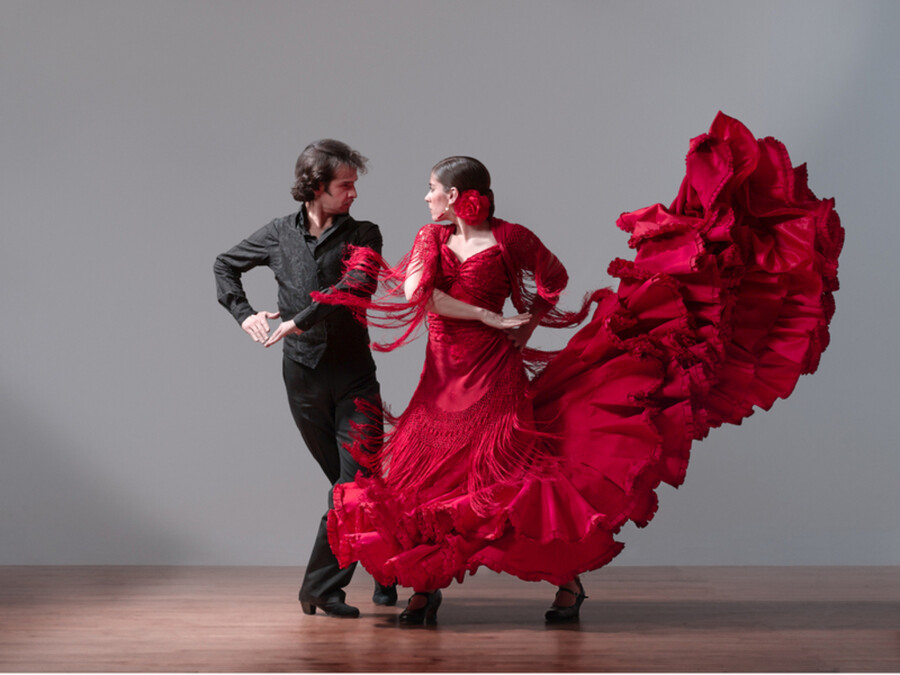 Flamenco involves allowing yourself to open up, releasing while there still is a tension. Kind of like don’t over think when you’re simmering in your flamenco energy, getting ready to reach a boiling point! But the other obvious things are to show up to class, practice, listen to flamenco, and watch flamenco.
Flamenco involves allowing yourself to open up, releasing while there still is a tension. Kind of like don’t over think when you’re simmering in your flamenco energy, getting ready to reach a boiling point! But the other obvious things are to show up to class, practice, listen to flamenco, and watch flamenco.
Sounds like a lot, I know! But when you have the flamenco bug, all of it is a joy and feeds our passions (even when we’re frustrated at not understanding a particular piece of footwork!)
So, sign up for your local flamenco class or join my Online Flamenco Studio and enjoy the process. Show up, breathe and release. OLE!
Flamenco Dancing - Learn to Flamenco
By Sarah Bird
Photo: Rami Katzav/iStock/Thinkstock
As a woman, you almost always want to dance more than the men around you do. At a certain age, those few men who might have danced with you have all achieved the only dance objective they ever had—acquisition of a steady sex partner.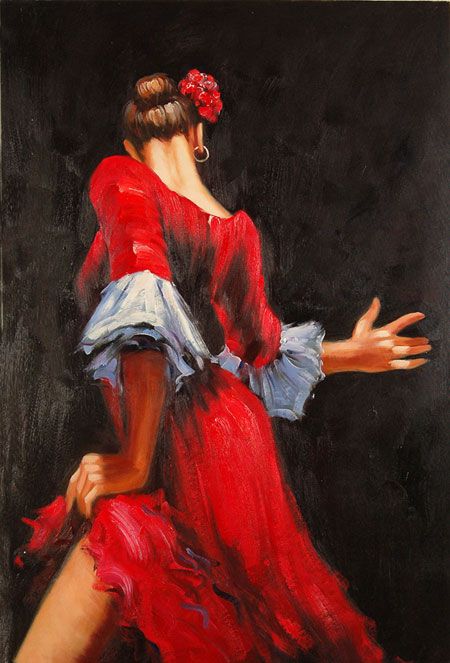 You might even be that partner. You might even have a child, a mortgage, a dog, two—God help you, two!—Volvos. In any case, the man in your life doesn't want to dance anymore. And why should he? You have no desire to scream at television sets broadcasting football games. We must all answer to our own passions.
You might even be that partner. You might even have a child, a mortgage, a dog, two—God help you, two!—Volvos. In any case, the man in your life doesn't want to dance anymore. And why should he? You have no desire to scream at television sets broadcasting football games. We must all answer to our own passions.
Desperate, you turn to partnerless dance mutations—Salsacize, sweating to oldies, Cardio Hip-Hop, Yo! Yo! Yoga!, and the saddest of all the substitutes, tap. You even consider belly dancing, but immediately think better of it.
And then you discover "it," you discover flamenco.
What a revelation this passionate, fiery, aerobically enriching dance form is! You don't need a partner, and it absolutely doesn't matter how young or old or fat or thin you are. In fact you learn, to your immense delight, some of the biggest stars of flamenco are extremely well-upholstered and very suitably seasoned. You feel this could be your last chance to grab at a life-changing soul-body experience.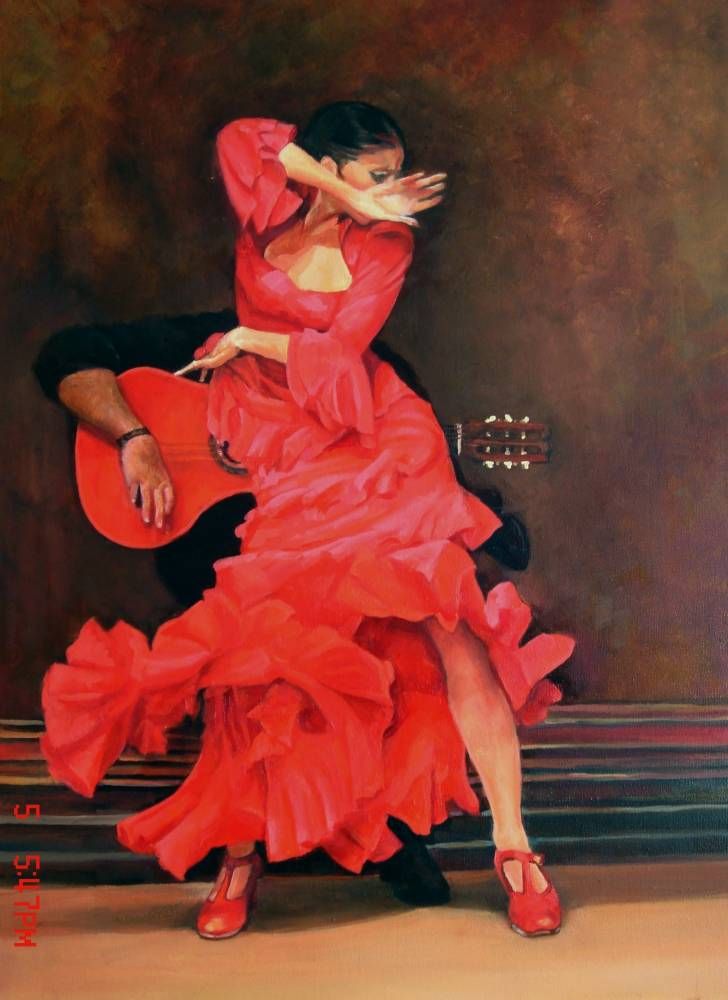
Well, okay, maybe you don't, but I did—which is why I was delirious to discover that my alma mater, the University of New Mexico, hosts the International Flamenco Festival every summer. For those glorious dozen or so days, the cream of el mundo flamenco descends on Albuquerque to perform and teach complete novices like myself in marathon workshops that compress years of weekly classes.
Is it possible in that amount of time for a middle-aged woman to cut loose, shake off inhibitions and a potentially atrophied sense of rhythm, and get her flamenco groove on? I'm not sure, but I'm encouraged to learn that much emphasis is placed on hand movements and that several all-time legends went by the nickname El Cojo—"the Cripple." Still the doubts descend. I try to recall if I own anything with polka dots. And then, with a go-to-hell shrug that might be the first stirrings of my very own personal flamenco soul, I decide I have to do it. Husband and son will just have to boil their own hot dogs for 12 days.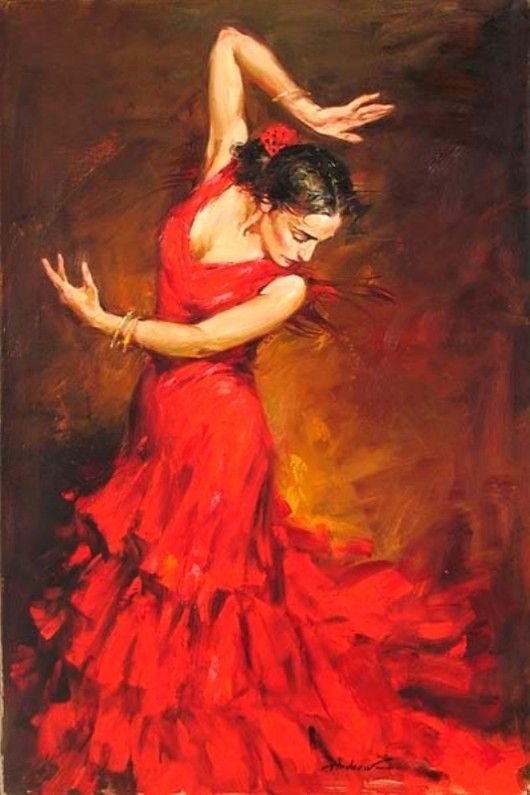 Adiós, muchachos, mamacita is going to dance! Olé!
Adiós, muchachos, mamacita is going to dance! Olé!
Let us pretend now that there are no husbands to convince, no boy child to pack off to camp, no dog to board, mail to stop, bags to pack, panic attacks to medicate about this utterly insane thing I am doing. Let me be transported magically to the sun-drenched campus where I was a hip-shaking, totally happening coed.
The heart of the festival is Carlisle Gym, an adobe-brown building where I once fumbled through my one class in modern dance. I rush in, intoxicated by breathing once again the weightless, piñon-scented desert air of my youth and by being so close to the Frontier Restaurant, home of that staple of my undergraduate diet—cinnamon rolls the size of a catcher's mitt. We are greeted by flamenco goddess Eva Encinias-Sandoval, program director and a radiant, unpretentious advertisement for her art.
Next: The first day of class
Subscribe to the live your best life newsletter Sign up for the oprah. com live your best life newsletter Get more stories like this delivered to your inbox Get updates on your favorite shows, the latest from Oprah's world and more! Get more inspiration like this delivered to your inbox
com live your best life newsletter Get more stories like this delivered to your inbox Get updates on your favorite shows, the latest from Oprah's world and more! Get more inspiration like this delivered to your inbox
Enter your email address
Please accept the Oprah.com terms and conditions and privacy policy
From the November 2002 issue of O, The Oprah Magazine
NEXT STORY
Subscribe to the live your best life newsletter Sign up for the oprah.com live your best life newsletter Get more stories like this delivered to your inbox Get updates on your favorite shows, the latest from Oprah's world and more! Get more inspiration like this delivered to your inbox
Enter your email address
Please accept the Oprah.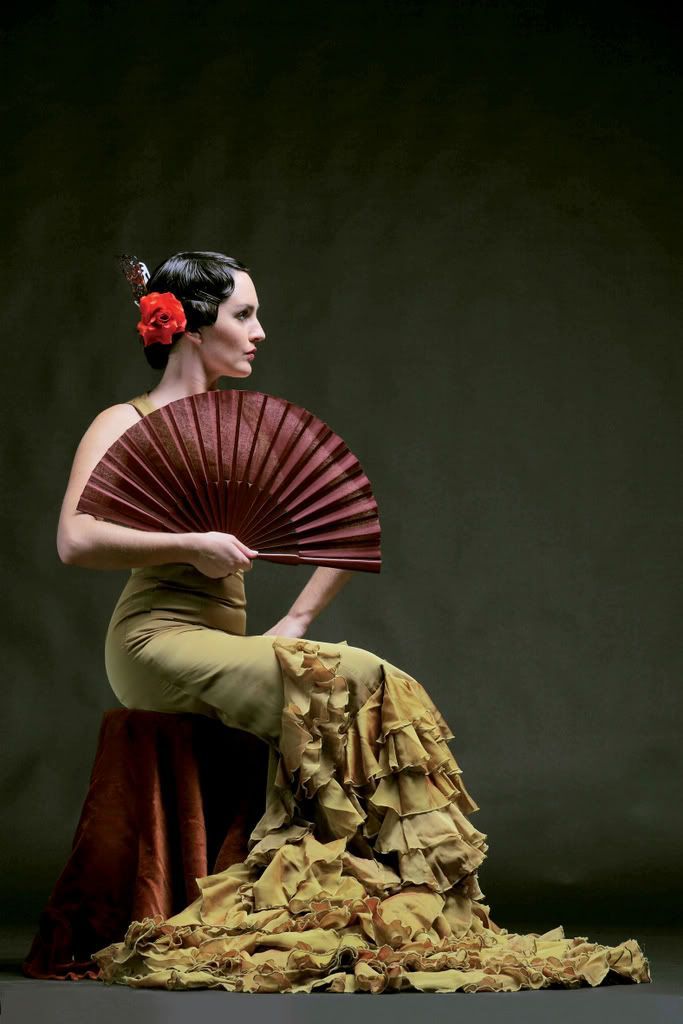 com terms and conditions and privacy policy
com terms and conditions and privacy policy
Flamenco dance for beginners: basic movements and secrets
Flamenco is a rhythmic dance of passion. He also combines singing and playing music on the guitar, percussion element (or simply clapping his hands) and cajon. For centuries, it has preserved the history of Spanish culture for us, although there are about 80 styles. Flamenco classes give emotional relaxation, which is so important in the conditions of life in the city. Allows you to improve your posture, tighten your arms and legs, get rid of complexes. Thanks to our recommendations and description of the basic flamenco dance movements for beginners, it will not be difficult to please loved ones with beautiful elements in the near future.
All styles are divided into groups that differ in a number of parameters. They differ mainly in their history. For example, alegrias is a direction based on songs that appeared in 1812 after the fall of the blockade of Cadiz. The next distinguishing parameter is mood. The third is the aesthetics of the performance, dividing the dance into hooligan, solemn and others. There are also parameters such as rhythm structure, mood and others.
The next distinguishing parameter is mood. The third is the aesthetics of the performance, dividing the dance into hooligan, solemn and others. There are also parameters such as rhythm structure, mood and others.
Doctors recommend this dance to patients to improve the functioning of the cardiovascular system and prevent varicose veins. Refers to rather energy-intensive dance types of cardio loads, which contributes to weight loss. Due to the beating of the fraction, the lymph flow and blood circulation in the legs improves.
Posture and weight control
Balance, sense of one's own body and weight are the main conditions for successful mastery of dance. This is necessary for making sharp attacks, jumps and turns. Posture is equally important. The stoop and stiffness of the shoulders makes the dance ugly. A flat back provides more room for a variety of movements of the arms, legs, head and body. In addition, a good posture reduces the risk of injury and increases self-confidence.
There is a myth about the need to keep the back "arched" throughout the dance. Only this is a delusion, since such a position is traumatic. Throughout the dance, the dancer assumes various postures in all directions. First you need to master the starting position. Stand up straight, push your chest forward a little, raise your arms up, while using the muscles of the back, and not the shoulders and neck. Do not lower your head, look forward, keep your shoulder girdle straight.
Step setting
The next step in learning is learning the basic steps. In addition to training with trainers, repeat the movements at home. Some steps may be difficult to learn. In this case, concentrate not so much on movement as on sound, rhythm, position of the feet. After that, it will become easier to coordinate the entire step.
Next you have to get used to the rhythm in order to enter at the right time.
Listen carefully to the music, tap the rhythm with a pen or pencil, you can clap it.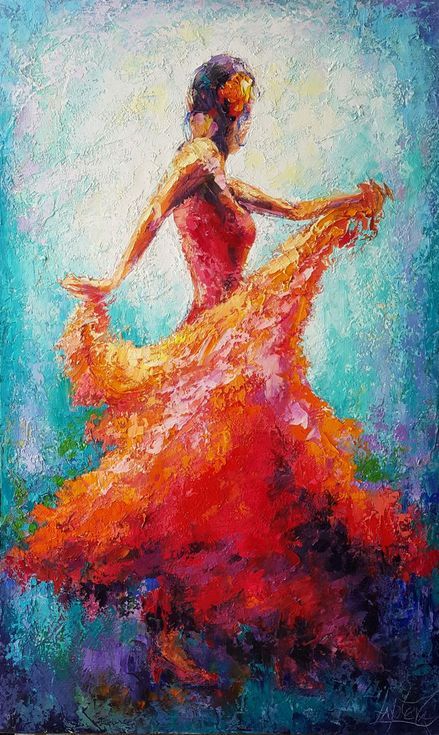 The account is not useful here and will not help out. Having mastered the basic steps, you can use them to connect movements or use more complicated variations.
The account is not useful here and will not help out. Having mastered the basic steps, you can use them to connect movements or use more complicated variations.
Practice in front of a mirror for the first time .
Movement of the arms
The arms should be rounded, always keep the elbows raised and half-bent. You can move on to learning the movements of the upper body after you learn to always keep your posture and control your body in the dance. The next stage is the development of wrist movements. Try to make the brushes as round as possible. When making movements with your hands, try not to move intensely. Never drop your elbows.
Whole body work
When working on a single element with your hands or feet, don't forget about the rest of your body. For example, when taking steps, keep an even posture. By the way, you always need to follow her, otherwise there is no point in further training.
Get rid of complexes, do not be afraid to look stupid at the stage of working out the steps.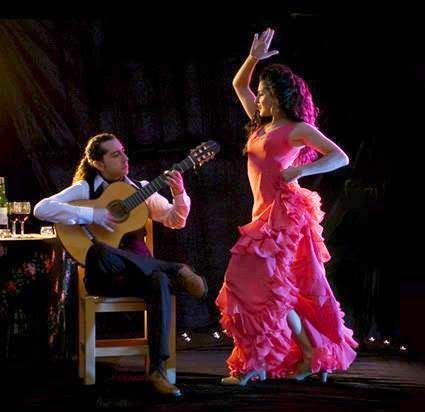 Flamenco will help you love and accept yourself for who you are. To get rid of the complexes, visualize and develop imaginative thinking. In other words, imagine yourself as a professional dancer during your workout.
Flamenco will help you love and accept yourself for who you are. To get rid of the complexes, visualize and develop imaginative thinking. In other words, imagine yourself as a professional dancer during your workout.
Repetition of lessons
You will achieve results only with regular and repeated repetition of both new elements and learned ones. After mastering the positions, move on to the steps, then add the movements of the legs. Then study transitions and turns. If you have problems when switching from one type of step to another, then you have poor control over your balance and your body . To make it easier to master new and complex steps in the future, work on the cause of failures. Understand that learning to dance flamenco will not work in a couple of months. You will need much more time.
Visualization of dance
Mentally do all the learned elements, especially at the end of the lesson. Sit down, close your eyes, play the rhythm in your mind and imagine yourself doing the pas.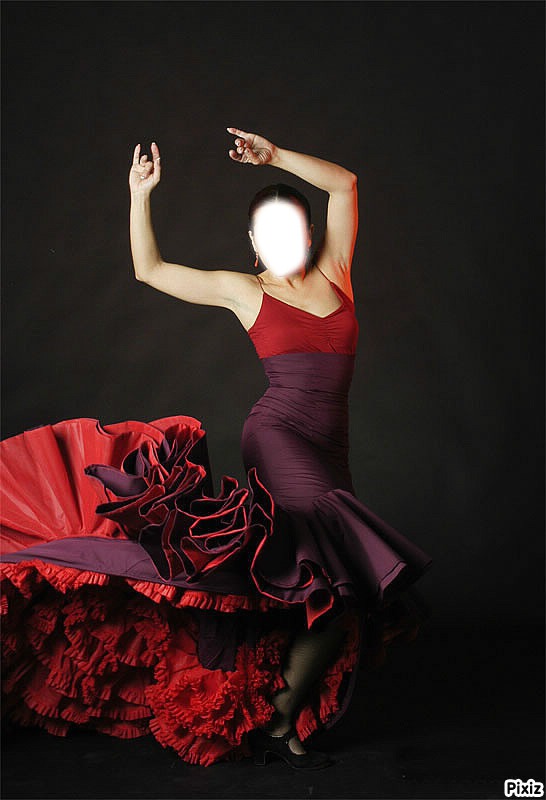 The main thing is to feel its implementation with your body. This helps to reinforce what has been learned, as well as facilitate further learning.
The main thing is to feel its implementation with your body. This helps to reinforce what has been learned, as well as facilitate further learning.
Genuine emotions
Learn the history of dance. The dancer must demonstrate different emotions while performing different steps:
- pain;
- pride;
- love;
- hate.
Dance with your heart, intuitively determine the appropriate emotion.
Basic Flamenco Movements
Once you have mastered the basic steps, you will be ready to move on to transitions and transitions. Therefore, pay attention to the technique of their implementation and the sense of rhythm.
Golpe (golpe)
Hitting with a full foot produces a full sound. With your foot you make a loud sound on the floor, as if you are putting a seal.
In the starting position, both legs are slightly bent at the knees and stand side by side at a short distance (3-5 cm).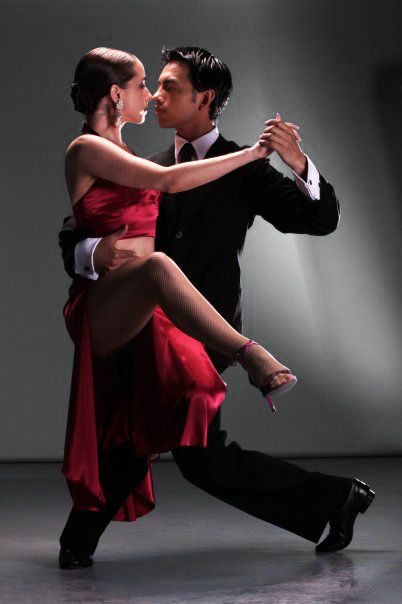 The body is clearly above the legs, the weight of the body is evenly distributed between them. The position should be stable and comfortable.
The body is clearly above the legs, the weight of the body is evenly distributed between them. The position should be stable and comfortable.
Planta (planta)
Hitting or placing the foot on the floor only with a toe with a high heel. In other words, you strike with the pads of your fingers, trying not to touch the surface with the metal part of the shoes. May be with or without sound.
Tacon
Heel strike from planta or golpe position. You cannot move the heel until the next step begins.
Tacon aldante (heel forward)
This is a variation on the basic tacon movement for the flamingo dance for beginners. There is a sliding element here, otherwise there is no difference.
Punta (punta)
Ponta or Punta means big toe. A step involves performing a toe strike behind the body or in front of the supporting leg, immediately raising it somewhere to the level of the ankle of the supporting limb.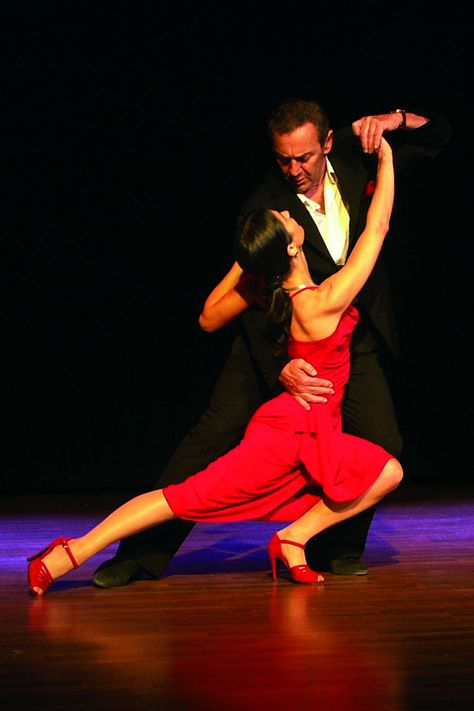 The set "point" gives a loud sound.
The set "point" gives a loud sound.
Flamenco in St. Petersburg: prices, reviews and addresses
Flamenco - prices and reviews. Comparative table of dance schools in St. Petersburg, where there are flamenco dance training services.
Service:
Location:
Show
changes
Show map
The Dance.Firmika.ru portal contains information about where you can sign up for flamenco classes in St. Petersburg: addresses and telephone numbers of dance schools and dance studios, prices for the most popular destinations, student reviews. For greater convenience in using the portal and searching for a dance school, we suggest using a convenient filter by districts and metro stations. Visual tables will help you compare the cost of classes and trainings in different dance studios in the city, choosing the best option for the price.
Flamenco is a very young dance direction that originated around two centuries ago.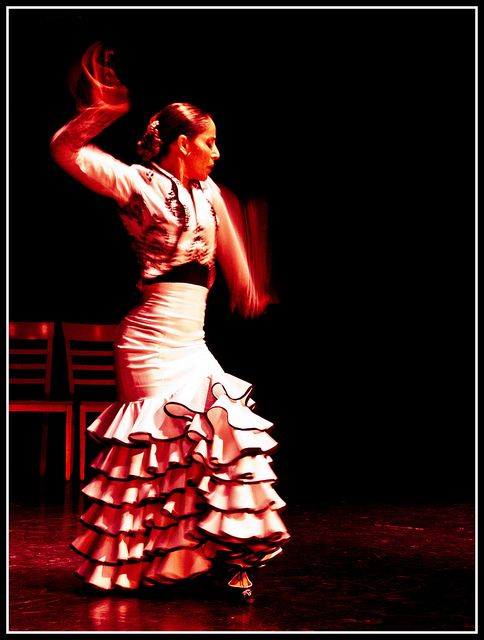 The constant development of flamenco is directly related to using the guitar in music that saturates its sound. At its core, flamenco it is a product of absorption and absorption of different cultures, which harmoniously combined in one dance.
The constant development of flamenco is directly related to using the guitar in music that saturates its sound. At its core, flamenco it is a product of absorption and absorption of different cultures, which harmoniously combined in one dance.
Flamenco dancing - features and characteristics
Professional dancers fascinate with their movements and energy. A clear rhythm, bright and expressive elements - flamenco dance is easy it's impossible not to fall in love. The characteristic features of the direction include beating the rhythm with heels, in which a clear drum sound of beats is born the sole of the boot and the heel on the floor - the "Zapateado" technique. It requires a lot energy costs, so for a long time she was associated with male dancers. Women's movements are characterized by great softness and smoothness.
However, flamenco dance today is not so clearly divided between men and women.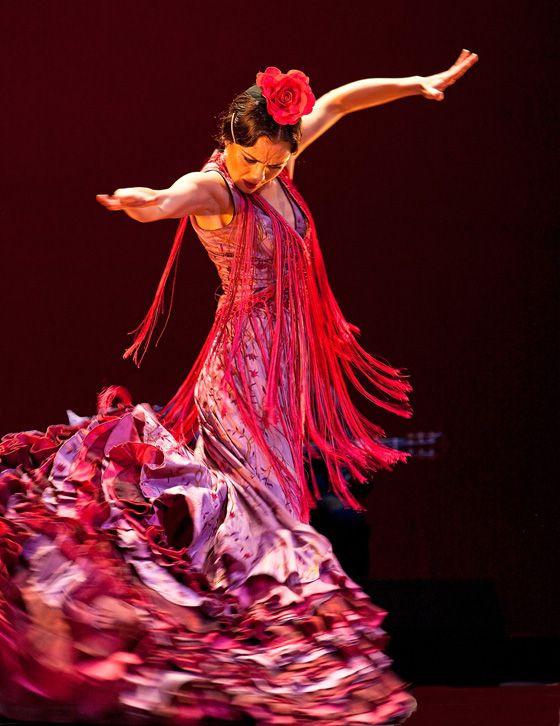 women. Is it that the movements of the dancers are wavy and sensuality. Soft lines of the arms that do not break the shoulders or elbows. Flamenco lessons in dance schools teach smoothness of movement. For example, in women, the movable hands in the dance are like closing and opening fans, captivating in their effectiveness. Men tend to be more strict and restrained movements of the hands, which are more like swords cutting the air.
women. Is it that the movements of the dancers are wavy and sensuality. Soft lines of the arms that do not break the shoulders or elbows. Flamenco lessons in dance schools teach smoothness of movement. For example, in women, the movable hands in the dance are like closing and opening fans, captivating in their effectiveness. Men tend to be more strict and restrained movements of the hands, which are more like swords cutting the air.
Flamenco lessons for beginners will help you master elements such as "Pitos" - snapping fingers, "Palmas" - rhythmic claps with the help of crossed palms. They often sound in rhythm, bringing a special charm to it. Traditional flamenco does not use additional objects, hands remain during movements. Despite the fact that castanets are considered a classic element dance, they were originally used only in the Spanish style. However, they quickly loved by the audience, becoming an integral attribute of any performance.
Is it difficult to learn how to dance flamenco?
An experienced teacher will help you feel the rhythm and melody and teach perfectly reflect them in the dance. Basic movements are not as difficult as they can be. seem - in the first lessons it will not be difficult to cope with them. Gradually, as you master the basic elements, the flamenco teacher complicates learning process, sets more complex movements. Improving skills and perfecting the technique takes a lot of time, but the end result will make freeze in admiration even the most picky viewers!
Basic movements are not as difficult as they can be. seem - in the first lessons it will not be difficult to cope with them. Gradually, as you master the basic elements, the flamenco teacher complicates learning process, sets more complex movements. Improving skills and perfecting the technique takes a lot of time, but the end result will make freeze in admiration even the most picky viewers!
Flamenco training in St. Petersburg
Today flamenco for beginners and advanced can be found in almost any dance school offering students Latin American directions. Using our portal to find such a school and choose really experienced and professional teacher becomes much easier. The pages of the portal contain information about dance schools in St. Petersburg, which have lessons flamenco. Visitors will be able to find out the cost of flamenco classes, read reviews about teachers and schools, to choose the most convenient territorial institution.
Flamenco questions
Ask a new question
The question will be asked to all schools on the portal after verification. Answers usually come within a day.
Answers usually come within a day. Ask a question
-
I am 50 years old. Are there age groups m...
Anonymous Rostov-on-Don
5 months back 419
responses
I am 50 years old. Are there age groups for me? read more
-
Where flamenco is taught in Rostov-on-Don,...
Rostov-on-Don
8 months back 606
1
response
Where flamenco is taught in Rostov-on-Don, prices, contacts read more
-
Who will teach you how to dance flamenco?.
